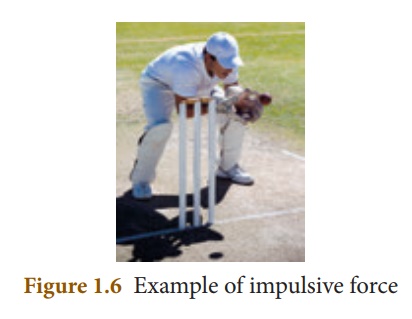Definition, Formula, Examples - Impulse | 10th Science : Chapter 1 : Laws of Motion
Chapter: 10th Science : Chapter 1 : Laws of Motion
Impulse
Impulse
A large force acting for
a very short interval of time is called as ŌĆśImpulsive forceŌĆÖ. When a
force F acts on a body for a period of time t, then the product of force and
time is known as ŌĆśimpulseŌĆÖ represented by ŌĆśJŌĆÖ
Impulse, J = F ├Ś t (1.7)
By NewtonŌĆÖs second law
F = Δp / t (Δ refers to
change)
╬öp = F ├Ś t (1.8)
From 1.7 and 1.8
J = Δp
Impulse is also equal to
the magnitude of change in momentum. Its unit is kg m sŌĆō1 or N s. Change
in momentum can be achieved in two ways. They are:
i. a large force acting for a short period of time and
ii. a smaller force acting for a longer period of time.
Examples:
’┐Į Automobiles are fitted
with springs and shock absorbers to reduce jerks while moving on uneven roads.
’┐Į In cricket, a fielder
pulls back his hands while catching the ball. He experiences a smaller force
for a longer interval of time to catch the ball, resulting in a lesser impulse
on his hands.

Related Topics